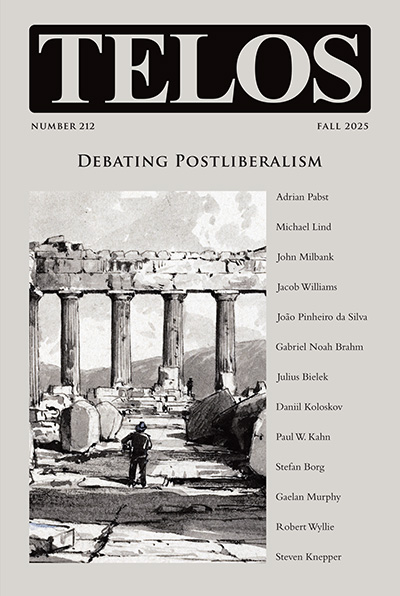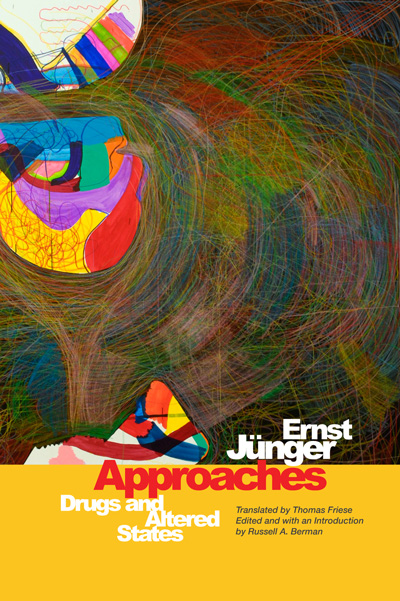The following article was originally published in the Greek newspaper To Vima on December 21, 1997, on the occasion of the 70th anniversary of the first publication of Martin Heidegger’s Being and Time. Translated by Raymond Petridis. Edited by Stephen Stafford.
I consider Being and Time to be one of the overrated books of the century. To be precise, I regard it as a collection of platitudes expressed in pretentious and obscure language. Whoever goes beyond the narrow philosophical perspective and surveys the history of ideas and problems in its totality arrives at this conclusion. Being very one-sidedly educated as a rule, philosophers usually inflate the importance of things that take place in their own field and consider an author original solely because he introduces them to one or two new concepts. In reality, the philosophy of the Modern Era did not create its own problematic but followed, directly or indirectly, in a better or worse manner, the rapid changes that occurred chiefly in the natural sciences to begin with, and subsequently in the social and human sciences. The epistemologically oriented philosophy of the subject was developed in the seventeenth and eighteenth centuries as an attempt to provide answers to questions raised by the mathematical physics of the time (the distinction between primary and secondary qualities, causality, substance). The social and human sciences, whose foundations were laid in the eighteenth century and which came into their own in the nineteenth, introduced a perspective that has proven fatal for philosophy’s vital myth, namely, that of the autonomy of spirit, since they demonstrated its dependence not only on “irrational” and “existential” factors but on “non-spiritual,” socioeconomic, and historical ones too.
Under the pressure of these trends, the central problem of philosophy has now become its own refutation, or at least the refutation of the way in which it had traditionally—and arrogantly—perceived itself. The work of Marx, Nietzsche, Freud, Dilthey, American pragmatism, and Bergson has shown in various ways, but already most adequately, that philosophy and intellectual creation in general are rooted in deeper strata, thus raising the question of the ontology of these strata. Heidegger approaches this problematic through Husserl’s phenomenological program, whose aim was to examine the constitution of the pre-scientific subject as the ground upon which the scientific world-image is constructed. Thus, instead of inaugurating a new philosophical perspective along with a new consideration of the philosophical phenomenon, he would appear to be at the end of a path. And not only does he fail to expand the relevant problematic, but, on the contrary, he constricts it, although his pompous style creates the impression that he is enunciating unheard-of truths. This limiting of the investigative horizon assumes three forms: First, the “fundamental ontology” is a “philosophical anthropology,” that is, the deeper philosophical stratum being sought is located in the constant existential structure of man’s Being as an individual Being. Although it is stressed that this structure by definition includes existence in the world and coexistence with others, both the former and the latter are viewed exclusively from the perspective of the individual Being, whereas the constitution of the social subject and the social world remains marginalized. Thus, although many believe that Heidegger went beyond the traditional philosophy of the subject in the direction of a social ontology, this is precisely what he was unable to do. For the conceptual grasp of social Being in its supra-individual dimension and the realization that individual existence has a social dimension are two entirely different things. The analysis of social relationships among men, which in any case in Heidegger does not go beyond superficial hints, acquires social-ontological meaning only when it is undertaken in light of the constitution of the social Being; interpersonal relationships are social only insofar as they take place within society and with the knowledge of this fundamental fact.
Second, the determining of the existential constants of man’s Being appears one-sided and arbitrary. In his conversion of anthropological categories into ontological ones, Heidegger follows Kierkegaard, who described man’s existential situations as functions of his ontic affinity with something superior and more comprehensive and not as mere psychological circumstances. Moreover, the main body of ontological categories that Heidegger attributes to man’s Being has been taken unaltered and without any particular explanation from theological thought, starting with Augustine. However, it is far from self-evident that categories shaped in specific historical situations and under specific worldview circumstances can provide an appropriate framework for a supra-historical, i.e., ontological, analysis of human existence. And this gaffe is exacerbated by the fact that Heidegger introduces quintessentially theological concepts into a framework that he claims to be atheistic. But why should “guilt,” for instance, from the outset be a constitutive element of human existence if the latter is simply “thrown” into a world without meaning—or, at least, without a meaning established by someone, before whom man ought to feel guilty?
Third, although the ontology of man’s Being may search for the dimension of depth beyond cognitive-philosophical but also beyond moral concepts, it remains marked by axiological likes and dislikes. Heidegger, of course, denies that he is moralizing or criticizing culture, but anyone familiar with 1920s German literature and journalism will easily recognize the origins of his motifs. The tendency to evaluate does not follow the well-trodden path of moral theory—on the contrary, current bourgeois morality is indirectly attacked; it is articulated as a confrontation between “authentic” and “inauthentic” existence, as the latter supposedly prevails at the level of the anonymous mass. This confrontation serves as a hub for the grouping of numerous categorical distinctions, e.g., between “resoluteness” (in order for one to face the ultimate problems of existence) and “irresoluteness.” The same confrontation is also interwoven with what Heidegger went on to write in his critique of technological civilization.
Using a key example, let us now briefly show how these three facts affect the analyses of Being and Time. Heidegger’s account of death brings together the focus on individual Being, the memories of theology, and the distinction between “authentic” and “inauthentic,” in a discussion that is certainly grandiloquent but of little substance as far as social ontology is concerned. Death is considered interesting as a catalyst for that fear and that expectation which supposedly evidence that a being lives authentically at the very limit of its potential. However, behind this dramatic image of the existential tension of a solitary human experiencing what is most authentic at the edge of an abyss, there is absolutely nothing. Just like many others before him, Heidegger is unable to say anything about death per se. Because, paradoxical though it may seem, man cannot connect any thought with death and alone with death. Whatever he is thinking when he speaks of death refers either to life (as something he does not want to lose) or to what he believes awaits him after life; the moment and momentary experience of death defies any attempt at conceptualization—perhaps because it does not exist. The ontological problem is therefore much broader than the relationship between an “authentic” existence and a burst of hot air. It lies in the examination of the effects of man’s mortality on the constitution of his social existence. It is not man’s relationship with death that regulates his relationships with others, but the opposite: man’s relationships with others determine, directly or indirectly, the way he dies and the way he goes to meet his death. This is not only true of the man standing in front of an execution squad as the representative of some political faction, but of anyone who dies believing that he is going to meet his Maker, because his faith is also the faith of a community to which the dying man belongs. Moreover, the mortality of man entails the possibility of his violent death. It is precisely the fact of violent death, however, that determines the entire range of possible relationships between men: extreme friendship is demonstrated when I sacrifice my life for someone, and extreme enmity when I kill someone. All other relationships lie between these two extremes.
These and other major concerns of social ontology are not even mentioned in passing in Being and Time. Its perspective is a specific and a limited one. Thus, despite its many readers and commentators, it has contributed very little to anthropological, social, or even philosophical studies; repetition, rephrasing, and the insertion of lofty-sounding utterances and terms do not constitute a contribution. I see nothing here which the well-informed reader could not find elsewhere, expressed better and more simply. Of course when a work is, for whatever reason, at the center of interest, it is connected to all current discussions and this creates the illusion that its content is much richer than is really the case. The same applies to Heidegger’s later work. Elsewhere[1], I have shown that both his critique of metaphysics and his critical stance toward modern technological-scientific thinking possess little claim to originality and depth. But from early as ancient times it has been known that the fortunes of books are determined by various and multiple factors. Habent sua fata libelli. (Books have their own destinies).
Notes
1. See Panajotis Kondylis, Die Neuzeitliche Metaphysikkritik (Stuttgart: Klett-Cotta, 1990), pp. 387ff., 450ff., 553ff. [translator’s note].




The analysis bears the clear reflection of well informed thinking but it has its own problems which are the problems of philosophy in general. To understand someone with a simple yes or no is only a way to simplify the simple which is actually more complex than the very meaning. Heidegger’s notion of being is existence without a reason which we see now as a method to dissect the very reason itself.